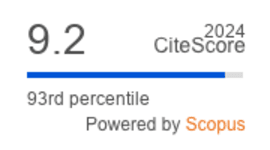The chemistry of gut microbiome in health and diseases
DOI:
https://doi.org/10.36877/pmmb.a0000175Abstract
There are trillions of microbes residing in our body, with their collective genomes much more than human genomes. They have been living in a close relationship with us and play a role in various biological functions. The human microbes begin to build up in utero, accumulate, and fluctuate until a set point is achieved around three years of age. The gut microbiome is altered by several factors, which include age, diet, and antibiotic use. After the exposure, the microbe may shift back to retain its balance, but some factors may leave a permanent footprint on the gut flora. This may be significant as our review has shown the relationships between microbes and diseases. When the homeostasis of gut-microbes is disrupted, multiple mechanisms have been shown to contribute to diseases' development. The balance between protective and pathogenic microbes must be kept in check to prevent disease onset. With a better understanding of this relationship, we will investigate the potential methods to modify the gut flora as the background of developing therapeutic options. There are already some therapeutic options such as prebiotics, probiotics, and fecal transplantation, but their clinical use is limited and restricted. Therefore, there is still a need to investigate the characteristic microbiome association with gut-dysbiosis-related diseases, which may help manage the disease and develop diagnostic and monitoring tools. This review aims to discuss our gut microbiome and its association with human health and diseases.
Downloads
Published
How to Cite
Issue
Section
License
Copyright (c) 2021 Agnes Wei Yin Lau, Loh Teng-Hern Tan, Nurul-Syakima Ab Mutalib, Sunny Hei Wong, Vengadesh Letchumanan, Learn-Han Lee

This work is licensed under a Creative Commons Attribution-NonCommercial 4.0 International License.
Author(s) shall retain the copyright of their work and grant the Journal/Publisher right for the first publication with the work simultaneously licensed under:
Creative Commons Attribution-NonCommercial 4.0 International (CC BY-NC 4.0). This license allows for the copying, distribution and transmission of the work, provided the correct attribution of the original creator is stated. Adaptation and remixing are also permitted.

This broad license intends to facilitate free access to, as well as the unrestricted reuse of, original works of all types for non-commercial purposes.
The author(s) permits HH Publisher to publish this article that has not been submitted elsewhere.



.png)

.jpg)
